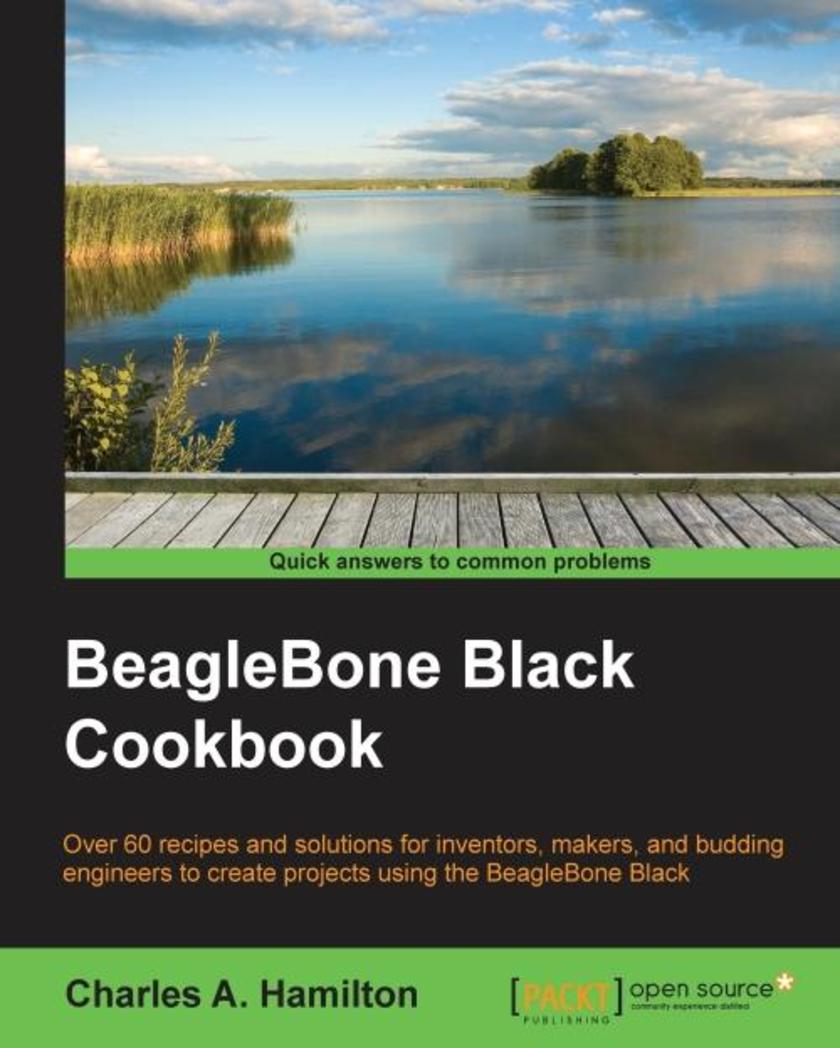
BeagleBone Black Cookbook
¥80.65
Over 70 recipes and solutions for inventors, makers, and budding engineers to create projects using the BeagleBone Black About This Book ?Learn how to develop applications with the BeagleBone Black and open source Linux software ?Sharpen your expertise in making sophisticated electronic devices ?Explore the BeagleBone Black with this easy-to-succeed recipe format Who This Book Is For If you are a hardware, Linux, and/or microcomputing novice, or someone who wants more power and possibilities with product prototypes, electronic art projects, or embedded computing experiments, then this book is for you. It is for Internet of Things enthusiasts who want to use more sophisticated hardware than the Raspberry Pi or the Arduino can provide. Whether you are an engineering student, a DIYer, an inventor, or an advanced electronics enthusiast, this book delivers accessible, compelling instructions for using an advanced microcomputing platform. What You Will Learn ?Set up and run the BeagleBone Black for the first time ?Learn the basics of microcomputing and Linux using the command line and easy kernel mods ?Make introductory projects with Python, JavaScript, BoneScript, and Node.js ?Explore physical computing and simple circuits using buttons, LEDs, sensors, and motors ?Discover the unique features of the BeagleBone Black and its real-time computing functions ?Build intermediate level audio and video applications ?Assemble draft prototypes for wearable and Internet of Things devices In Detail With dozens of how-tos, this book kicks off with the basic steps for setting up and running the BeagleBone Black for the first time, from connecting the necessary hardware and using the command line with Linux commands to installing new software and controlling your system remotely. Following these recipes, more advanced examples take you through *ing, debugging, and working with software source files, eventually working with the Linux kernel. Subsequently, you will learn how to exploit the board's real-time functions. We will then discover exciting methods for using sound and video with the system before marching forward into an exploration of recipes for building Internet of Things projects. Finally, the book finishes with a dramatic arc upward into outer space, when you explore ways to set up test recipes for building a project on board a small satellite's payload. Style and approach This comprehensive recipe book deconstructs a complex, often confusing piece of technology, and transforms it to become accessible and fun with snappy, unintimidating prose, and extensive easy-to-succeed instructions.
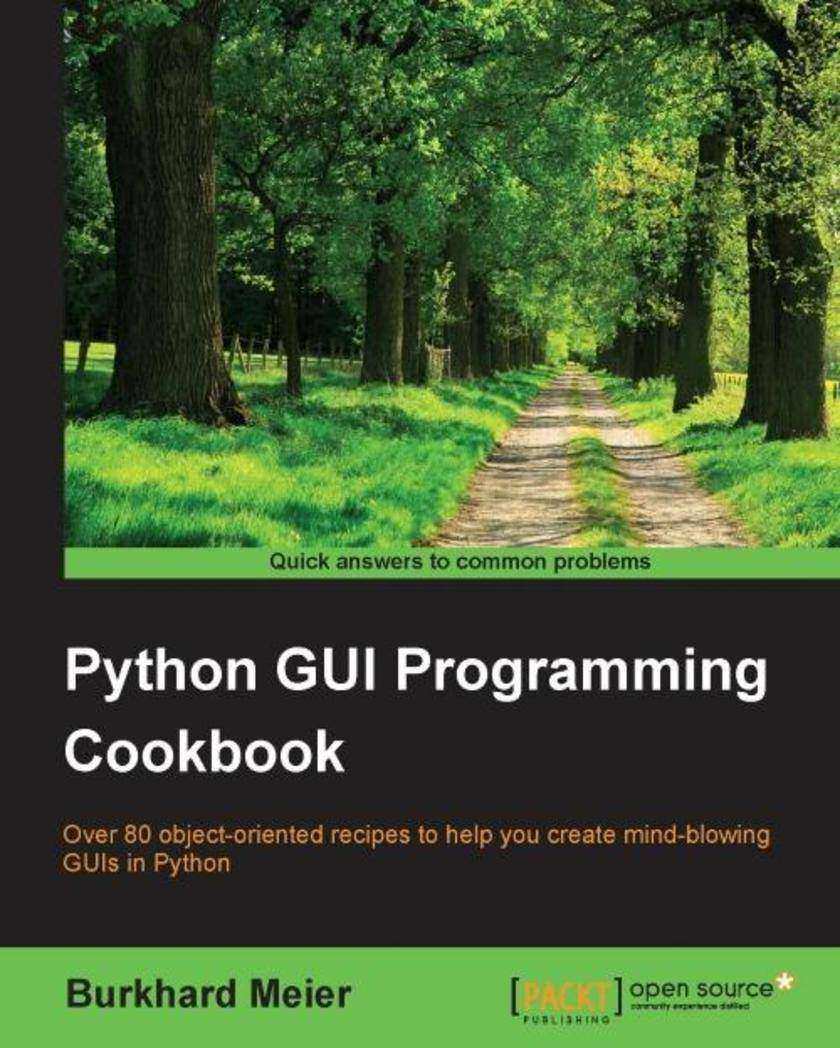
Python GUI Programming Cookbook
¥80.65
Over 80 object-oriented recipes to help you create mind-blowing GUIs in Python About This Book Use object-oriented programming to develop amazing GUIs in Python Create a working GUI project as a central resource for developing your Python GUIs Packed with easy-to-follow recipes to help you develop code using the latest released version of Python Who This Book Is For If you are a Python programmer with intermediate level knowledge of GUI programming and want to learn how to create beautiful, effective, and responsive GUIs using the freely available Python GUI frameworks, this book is for you. What You Will Learn Create amazing GUIs with Python’s built-in Tkinter module Customize the GUIs by using layout managers to arrange the GUI widgets Advance to an object-oriented programming style using Python Develop beautiful charts using the free Matplotlib Python module Use threading in a networked environment to make the GUIs responsive Discover ways to connect the GUIs to a database Understand how unit tests can be created and internationalize the GUI Extend the GUIs with free Python frameworks using best practices In Detail Python is a multi-domain, interpreted programming language. It is a widely used general-purpose, high-level programming language. It is often used as a *ing language because of its forgiving syntax and compatibility with a wide variety of different eco-systems. Its flexible syntax enables developers to write short *s while at the same time, they can use object-oriented concepts to develop very large projects. Python GUI Programming Cookbook follows a task-based approach to help you create beautiful and very effective GUIs with the least amount of code necessary. This book uses the simplest programming style, using the fewest lines of code to create a GUI in Python, and then advances to using object-oriented programming in later chapters. If you are new to object-oriented programming (OOP), this book will teach you how to take advantage of the OOP coding style in the context of creating GUIs written in Python. Throughout the book, you will develop an entire GUI application, building recipe upon recipe, connecting the GUI to a database. In the later chapters, you will explore additional Python GUI frameworks, using best practices. You will also learn how to use threading to ensure your GUI doesn’t go unresponsive. By the end of the book, you will be an expert in Python GUI programming to develop a common set of GUI applications. Style and approach Every recipe in this programming cookbook solves a problem you might encounter in your programming career. At the same time, most of the recipes build on each other to create an entire, real-life GUI application.
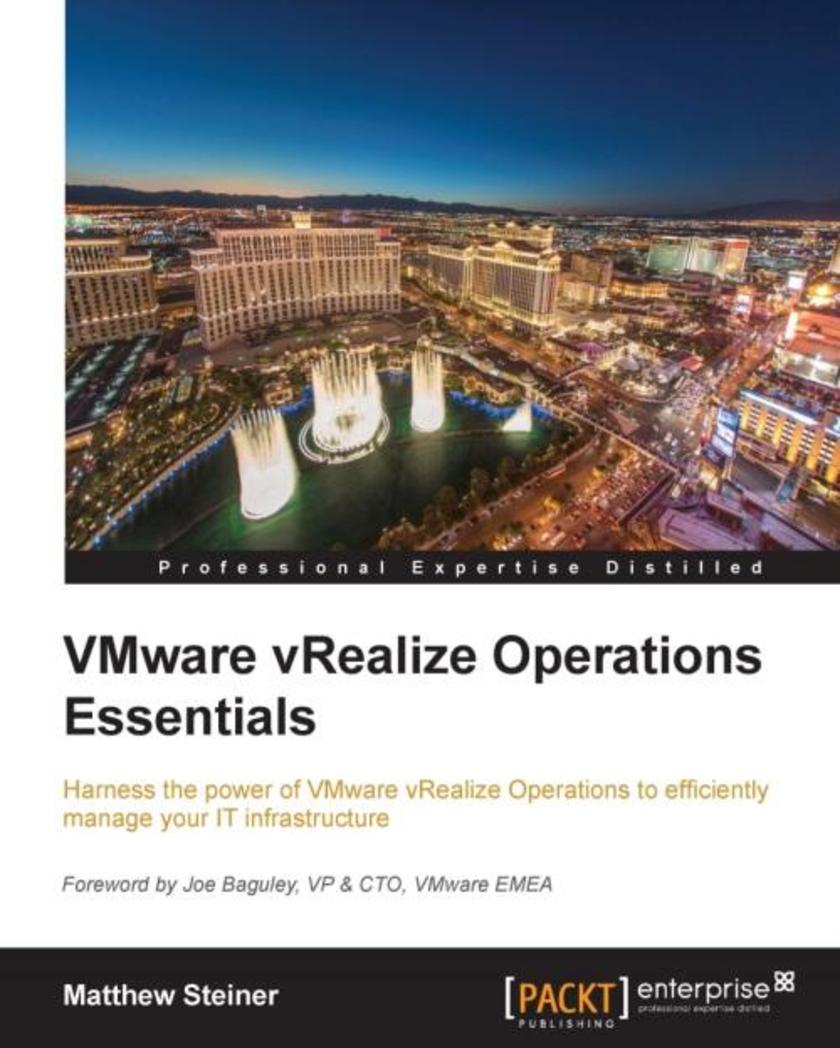
VMware vRealize Operations Essentials
¥80.65
Harness the power of VMware vRealize Operations to efficiently manage your IT infrastructure About This Book Extract the optimum performance, availability, and capacity of your IT infrastructure with the help of vRealise Operations Manager Leverage the power of strategic reports to drive tactful decision-making within the IT department A pragmatic guide to proficiently manage your applications and storage Who This Book Is For If you are a vSphere administrator and wish to optimize your virtual environment, this book is your go-to guide on vRealize Operations. As a vSphere administrator, it is assumed that you have a good understanding of both physical and virtual infrastructure. A basic knowledge of application monitoring and log analysis would be useful when we dive into the capabilities of the solution. What You Will Learn Architect, design, and install vRealize Operations Migrate from the previous vCenter Operations Manager 5.x version, configure vR Ops policies, and create custom groups Use out-of-the-box Dashboards, Views, and Reports and create your own customized Dashboards, Views, and Reports Apply the Alerting framework of Symptoms, Recommendations, and Actions, and create your own Alerting content Leverage the power of Capacity Planning to maximize the utilization of your virtual infrastructure Manage the rest of your infrastructure, including storage and applications, with vRealize Operations Management Packs Extend the solution with vRealize Hyperic and Log Insight In Detail This book will enable you to deliver on the operational disciplines of Performance, Health, Capacity, Configuration, and Compliance by making the best use of solutions provided by vRealize Operations. Starting with architecture, design, and sizing, we will ensure your implementation of vRealize Operations is a success. We will dive into the utilization of a solution to manage your vSphere infrastructure. Then, we will employ out-of-the-box Dashboards and the very powerful Views and Reporting functionality of vRealize Operations to create your custom dashboards and address your reporting requirements. Next, we go through the Alerting framework and how Symptoms, Recommendations, and Actions are used to achieve efficient operations. Later you will master the topic of Capacity Planning, where we look at how important it is to craft appropriate policies to match your requirements, and we’ll consider attitude toward capacity risk, which will aid you to build future project requirements into your capacity plans. Finally, we will look at extending the solution to manage Storage, Applications, and other IT infrastructures using Management Packs from Solution Exchange, as well as how the solution can be enhanced with the integration of Log Insight. Style and approach This book is a pragmatic, step-by-step guide that will quickly build your knowledge of the key capabilities of vRealize Operations. As well as learning about the solution, we will provide you with real-world examples that will help you customize and enhance your virtual environment.
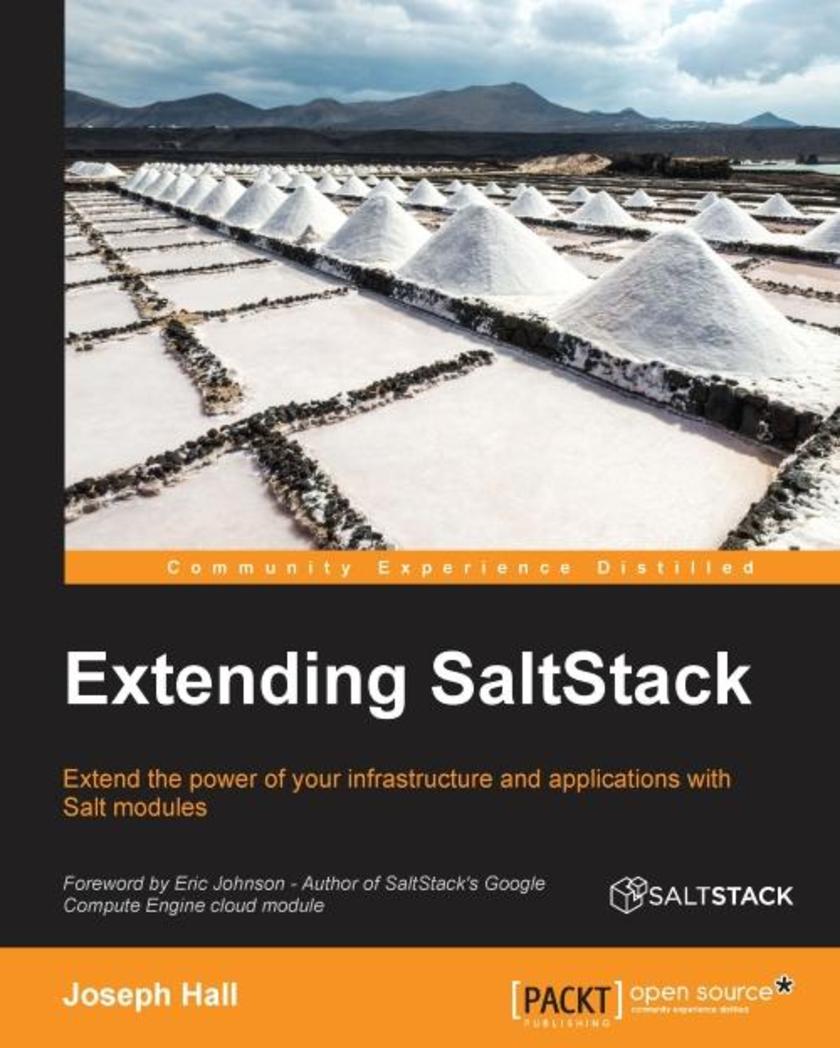
Extending SaltStack
¥80.65
Extend the power of your infrastructure and applications with Salt modules About This Book Get the most up-to-date practical resource on writing new Salt modules and extending Salt Learn through use cases and encounter both commonly-used modules as well as advanced ones Effectively troubleshoot problems and hiccups encountered while building and putting modules to work Who This Book Is For This book is for both new and existing Salt developers who are looking to build and write new Salt modules. Some prior Python development experience is expected. What You Will Learn Understand the working of Salt's Loader system Write several of the most common types of Salt modules Interact between different kinds of modules and build new ones Submit open source modules upstream to the Salt project Make Salt interact with third-party services and applications In Detail Salt already ships with a very powerful set of tools, but that doesn't mean that they all suit your needs perfectly. By adding your own modules and enhancing existing ones, you can bring the functionality that you need to increase your productivity. Extending SaltStack follows a tutorial-based approach to explain different types of modules, from fundamentals to complete and full-functioning modules. Starting with the Loader system that drives Salt, this book will guide you through the most common types of modules. First you will learn how to write execution modules. Then you will extend the configuration using the grain, pillar, and SDB modules. Next up will be state modules and then the renderers that can be used with them. This will be followed with returner and output modules, which increase your options to manage return data. After that, there will be modules for external file servers, clouds, beacons, and finally external authentication and wheel modules to manage the master. With this guide in hand, you will be prepared to create, troubleshoot, and manage the most common types of Salt modules and take your infrastructure to new heights! Style and approach This book follows a step-by-step tutorial-based approach explaining the different types of modules, from fundamentals to complete and full-functioning modules.
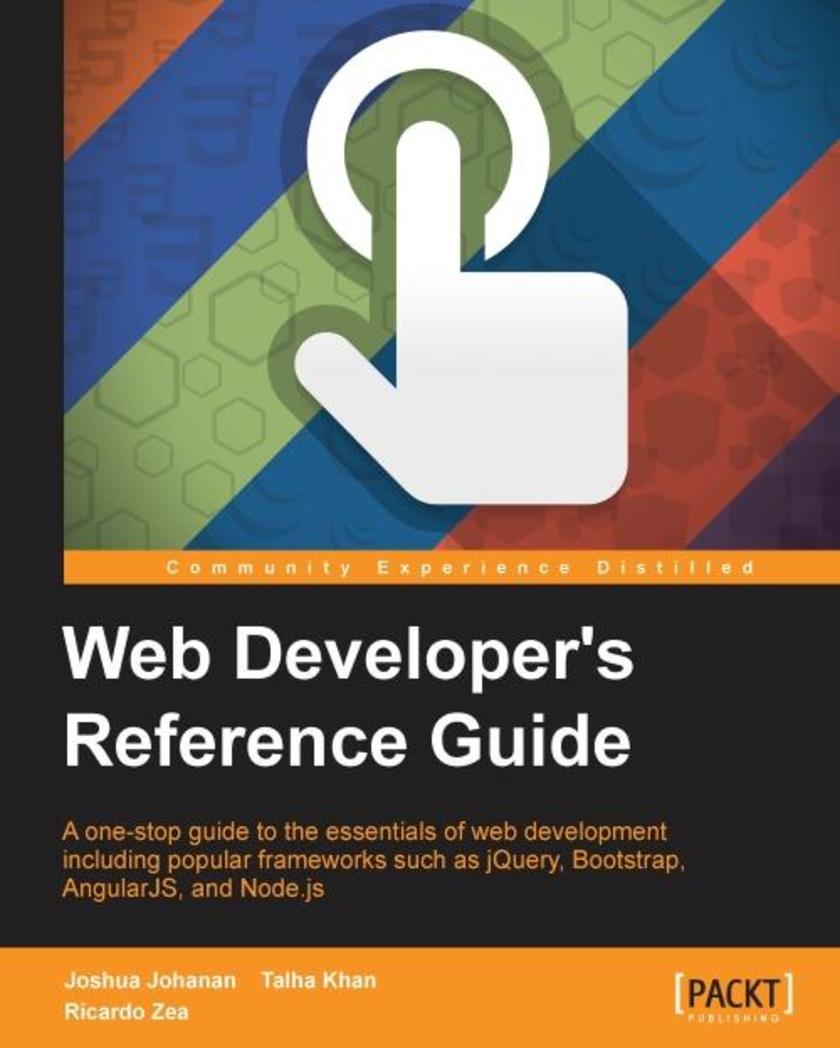
Web Developer's Reference Guide
¥80.65
A one-stop guide to the essentials of web development including popular frameworks such as jQuery, Bootstrap, AngularJS, and Node.js About This Book Understand the essential elements of HTML, CSS, and JavaScript, including how and when to use them Walk through three of the best and most popular web development frameworks – jQuery, Bootstrap, and AngularJS References for any function you will need in your day-to-day web development Who This Book Is For This book is perfect for beginners but more advanced web developers will also benefit. Laid out so you can refer to as much or as little as you need to, with this book you can exhaustively explore essential concepts for modern web developers. What You Will Learn Explore detailed explanations of all the major HTML elements and attributes, illustrated with examples Take a deep dive into CSS properties and functions and master their usage Find clear, concise de*ions of JavaScript syntax and expressions Recognize various JavaScript design patterns and learn the basics of JavaScript object-orientated programming Implement the latest ECMAScript 6 for client-side *ing in your web applications Discover new ways to develop your website's front end quickly and easily using Bootstrap Write JavaScript extensibly using jQuery-JavaScript's feature-rich library Delve into the key Node.js modules used in JavaScript server-side programming Access AngularJS 's important modules, controllers, directives, and services quickly In Detail This comprehensive reference guide takes you through each topic in web development and highlights the most popular and important elements of each area. Starting with HTML, you will learn key elements and attributes and how they relate to each other. Next, you will explore CSS pseudo-classes and pseudo-elements, followed by CSS properties and functions. This will introduce you to many powerful and new selectors. You will then move on to JavaScript. This section will not just introduce functions, but will provide you with an entire reference for the language and paradigms. You will discover more about three of the most popular frameworks today—Bootstrap, which builds on CSS, jQuery which builds on JavaScript, and AngularJS, which also builds on JavaScript. Finally, you will take a walk-through Node.js, which is a server-side framework that allows you to write programs in JavaScript. Style and approach This book is an easy-to-follow, comprehensive reference guide. Each topic, function, or element is listed methodically along with parameters, return values, and de*ions. Examples are also included to help you put the concepts to use quickly in the real world.
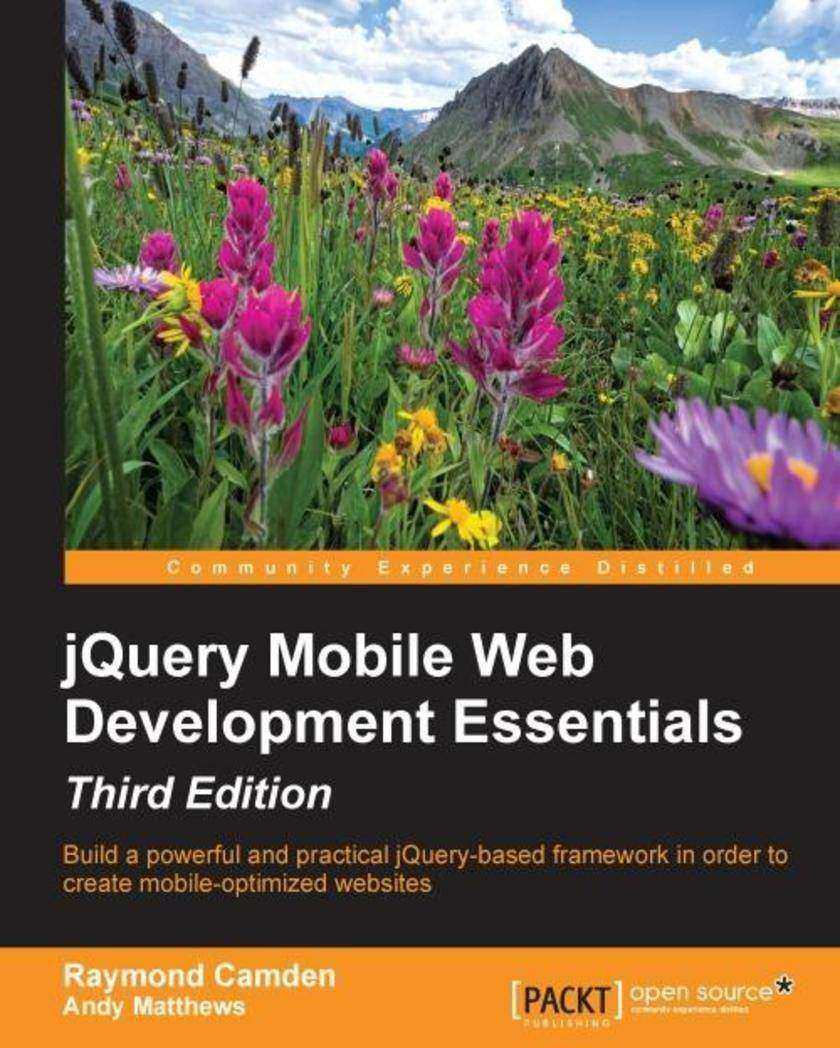
jQuery Mobile Web Development Essentials - Third Edition
¥80.65
Build a powerful and practical jQuery-based framework in order to create mobile-optimized websites About This Book Build websites with jQuery Mobile that work beautifully across a wide range of mobile devices Become a competent jQuery Mobile developer and learn the building blocks of jQuery Mobile’s component-driven design This book covers key concepts but with a focus on providing the practical skills required Who This Book Is For This book is for any web developer who is looking to create mobile-optimized websites. Basic knowledge of HTML is required. Minor familiarity with JavaScript would help but is not required. What You Will Learn Create mobile-optimized sites using simple HTML Structure your sites so users can browse them on mobile devices Find out how to work with multiple pages in the JQM framework and embed multiple pages in HTML files Enhance simple pages using various toolbars Include mobile-optimized forms for interactive sites Convert desktop sites into mobile versions Use HTML5’s local storage feature in jQuery Mobile to include persistent client-side storage Explore the rich sets of widgets and themes available and discover how to modify them for use in your jQuery Mobile site In Detail jQuery Mobile is a HTML5-based touch-optimized web framework. jQuery Mobile can be used to build responsive cross-platform websites and apps for a wide range of smartphones, tablets, and desktop devices. The jQuery Mobile framework can be integrated with other mobile app frameworks such as PhoneGap, IBM Worklight, and more. Introduction to jQuery Mobile explains how to add the framework to your HTML pages to create rich, mobile-optimized web pages with minimal effort. You’ll learn how to use jQuery Mobile’s automatic enhancements and configure the framework for customized, powerful mobile-friendly websites. We then dig into forms, events, and styling. You'll see how jQuery Mobile automatically enhances content, and will find out how to use the JavaScript API to build complex sites. We’ll introduce you to how jQuery Mobile can be themed as well looking into how JavaScript can be used for deep sets of customizations. The examples are ready to run and can be used to help kick-start your own site. Along the way, you will leverage all the concepts you learn to build three sample mobile applications. Style and approach Through a set of easy to follow instructions, we’ll show you how to use jQuery Mobile’s features one easy-to-use widget at a time. You’ll see examples for each feature as well as screenshots to demonstrate what they should look like on a mobile device. You can then take these example files and modify them as you learn to experiment.
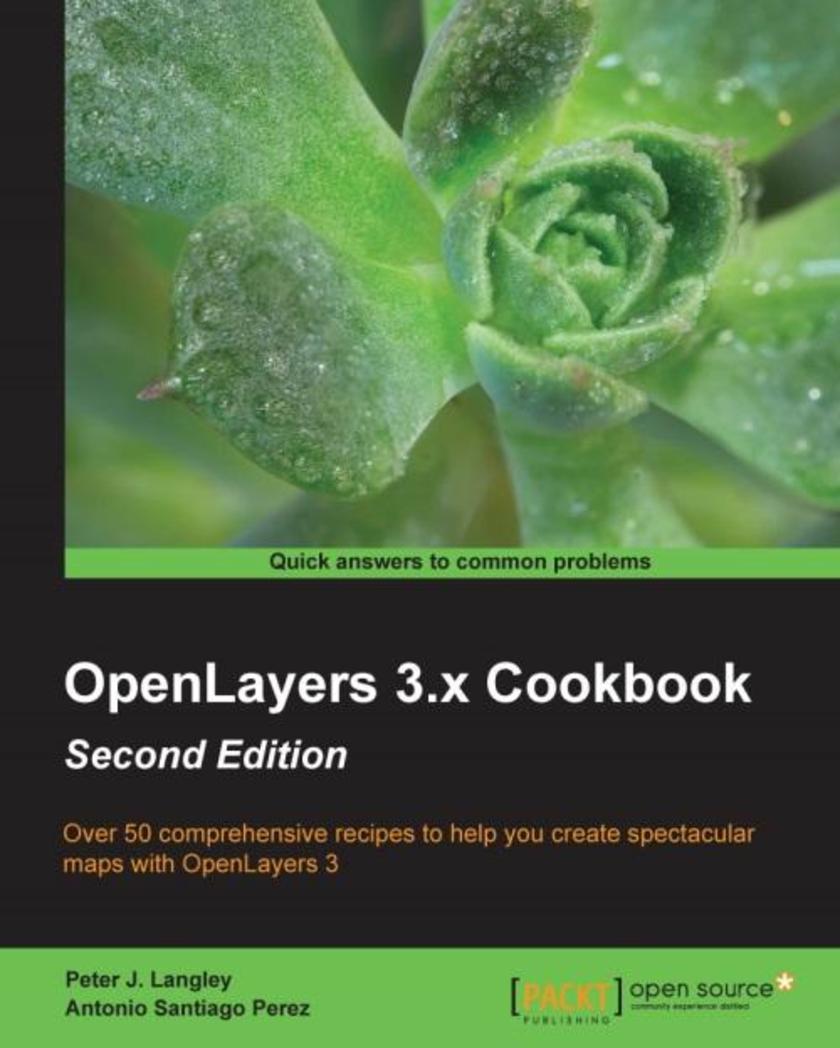
OpenLayers 3.x Cookbook - Second Edition
¥80.65
Over 50 comprehensive recipes to help you create spectacular maps with OpenLayers 3 About This Book Create highly customized mapping apps for the web with rich interactivity and diverse content using JavaScript See how successful mapping apps work and how they integrate with third-party services Packed full of code examples, screenshots, and explanations from professionals in the industry Who This Book Is For If you are a GIS-related professional with basic knowledge of web technologies and want to gain in-depth knowledge of creating web mapping applications, then this book is for you. The recipes will be appropriately mixed to suit JavaScript beginners or experts and cover basic to advanced topics on OpenLayers. What You Will Learn Create stunning maps, and understand projection. Add customized raster and vector layers Work with important tile providers Work with OGCs, WMS, and WFS compliant servers Read/write features from/to different data sources Style features to improve their visualization Understand events and work with the main controls Enhance maps with HTML5 technologies such as Geolocation In Detail Data visualization and analytics has become an important task across all technology-based industries. OpenLayers 3,is one of the most important and complete open source JavaScript mapping libraries today. Throughout this book, you will go through recipes that expose various features of OpenLayers 3, allowing you to gain an insight into building complex GIS web applications. You’ll get to grips with the basics of creating a map with common functionality and quickly advance to more complicated solutions that address modern challenges. You will explore into maps, raster and vector layers and styling in-depth. This book also includes problem solving and how-to recipes for the most common and important tasks. The range of recipes includes: creating basic maps, working with raster and vector layers, understanding events,working with the main controls, reading features from different data sources, styling features, and understanding the underlying architecture. It will also cover solutions and optimizations to challenges commonly faced in modern applications. Style and approach This book teaches you how to create stunning maps that are highly interactive and visually appealing with the help of 50 handpicked recipes. Each recipe will address your need to visualize data on a map. Just follow the steps in the recipes to create maps of your choice in no time.
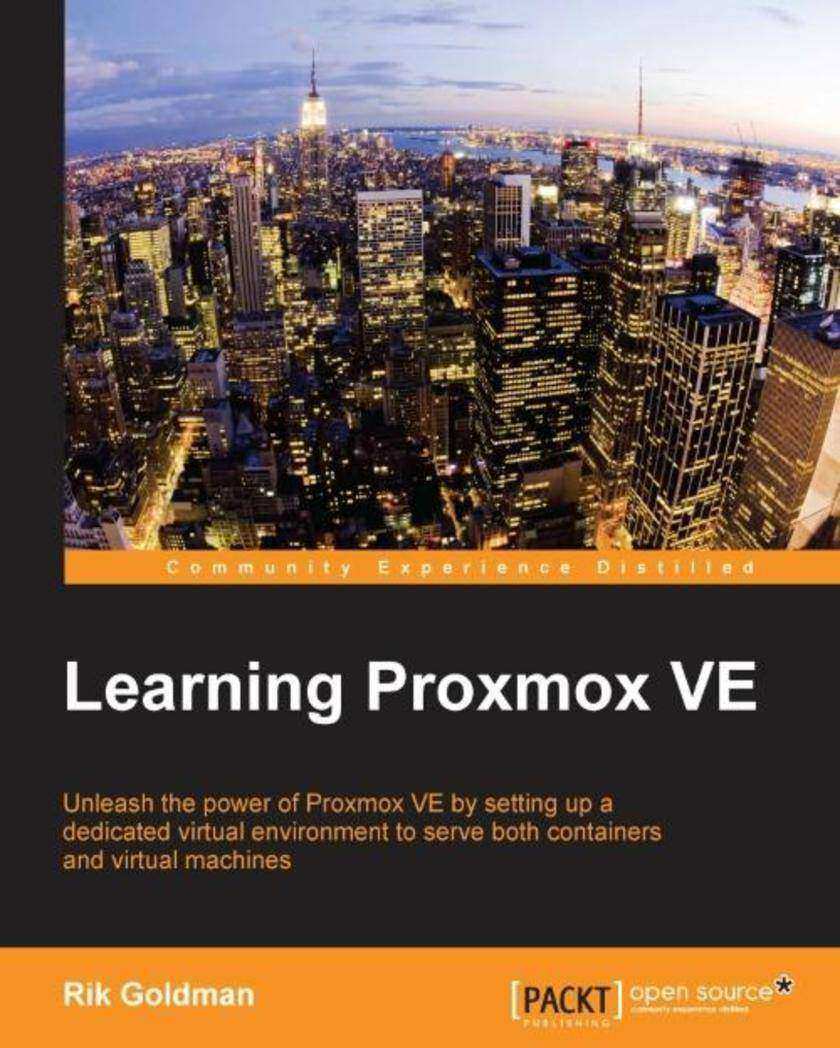
Learning Proxmox VE
¥80.65
Unleash the power of Proxmox VE by setting up a dedicated virtual environment to serve both containers and virtual machines About This Book Create virtual machines and containers from the comfort of your workstation using Proxmox VE's web-based management interface Maximize performance, security, and the quality of virtual services by tailoring container and virtual machine configurations based on established best practices Put theory to practice by deploying virtual servers that promise portability, modularity, flexibility, security, and quality of service at any scale Who This Book Is For This book is intended for server and system administrators and engineers who are eager to take advantage of the potential of virtual machines and containers to manage servers more efficiently and make the best use of resources, from energy consumption to hardware utilization and physical real estate What You Will Learn Install and configure Proxmox VE Create new virtual machines and containers Import container templates and virtual appliances Optimize virtual machine performance for common use cases Apply the latest security patches to a Proxmox VE host Contrast PVE virtual machines and containers to recognize their respective use cases Secure virtual machines and containers Assess the benefits of virtualization on budgets, server real estate, maintenance, and management time In Detail Proxmox VE 4.1 provides an open source, enterprise virtualization platform on which to host virtual servers as either virtual machines or containers. This book will support your practice of the requisite skills to successfully create, tailor, and deploy virtual machines and containers with Proxmox VE 4.1. Following a survey of PVE's features and characteristics,this book will contrast containers with virtual machines and establish cases for both. It walks through the installation of Proxmox VE, explores the creation of containers and virtual machines, and suggests best practices for virtual disk creation, network configuration, and Proxmox VE host and guest security. Throughout the book, you will navigate the Proxmox VE 4.1 web interface and explore options for command-line management. Style and approach This book is a practical exploration of the different processes and procedures, which are essential in beginning your journey to fluent creation and optimization of effective containers and virtual machines.
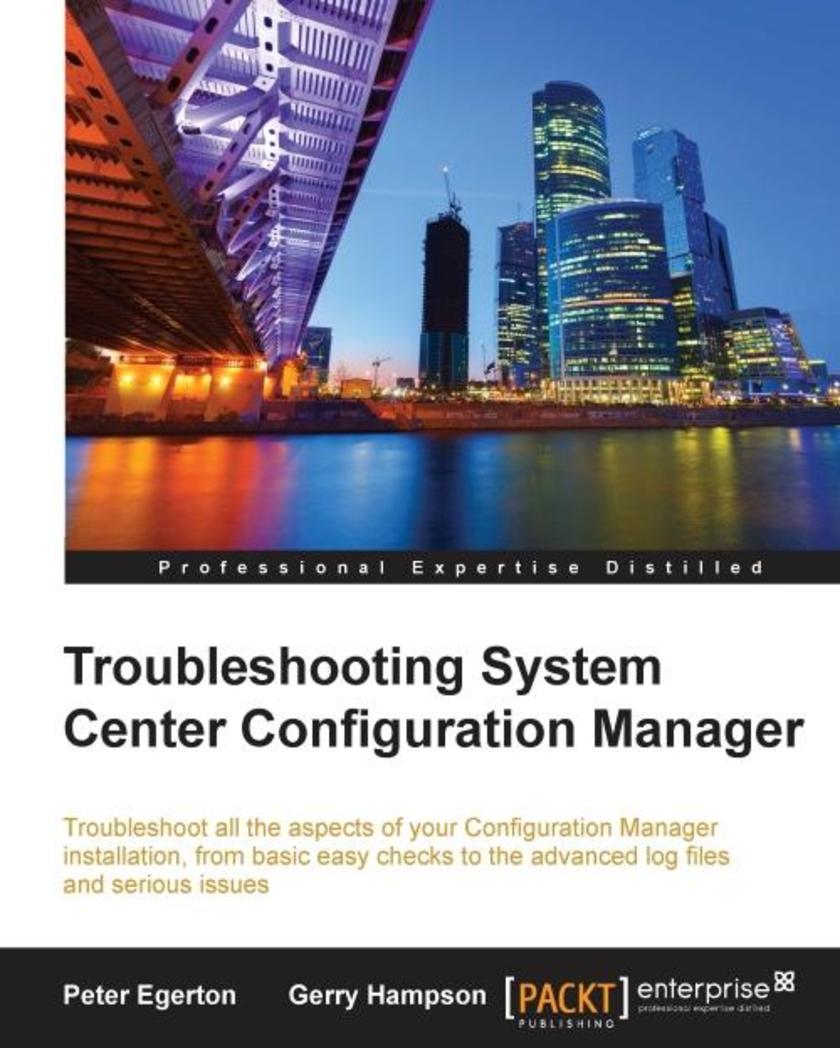
Troubleshooting System Center Configuration Manager
¥80.65
Troubleshoot all the aspects of your Configuration Manager installation, from basic easy checks to the advanced log files and serious issues About This Book Learn to troubleshoot Configuration Manager 2012 based versions of Microsoft System Center Understand the usability of tools and find resolutions to all the issues of Configuration Manager A step-by-step practical guide with the necessary screenshots and examples Who This Book Is For If you are new to Configuration Manager or have experience with it, and are interested in identifying, diagnosing and resolving the System Center Configuration Manager administration issues then this book is for you. What You Will Learn Fix your clients and install them correctly Understand how your Configuration Manager hierarchy works Extend your error information Troubleshoot Configuration Manager roles Know your options when faced with problems Prevent future problems occurring In Detail Microsoft System Center Configuration Manager is the most popular enterprise client management solution in the world with some of the best features available. Troubleshooting this product, however, is not always as simple as you might want, not least getting to know the hundreds of log files and understanding how the various components work. The book starts with discussing the most commonly used tools for troubleshooting the variety of problems that can be seen in Configuration Manager. It then moves to providing a high level view of the available log files, their locations, what they relate to and what they typically contain. Next, we will look at how we can fully utilize and extend all the available information from the console monitoring pane through to the status messages and down into error logging with some further reaches into WMI, SQL, registry and the file structure. You will then learn what the common error codes mean, how to make sense of the less common ones and what they actually mean with respect to Configuration Manager. Further to this, you will pick up widely acknowledged best practices both from a proactive stance when carrying out your daily administrative tasks and also from a reactive position when the green lights start to turn red right down to a complete failure situation. By the end of the book, you will be competent enough to identify and diagnose the root causes of System Center Configuration Manager administration issues and resolving them. Style and approach An easy to follow yet practical guide that will advise you on what tools and information you have available to troubleshoot with, if you can extend that information and what to look for solving the issues.
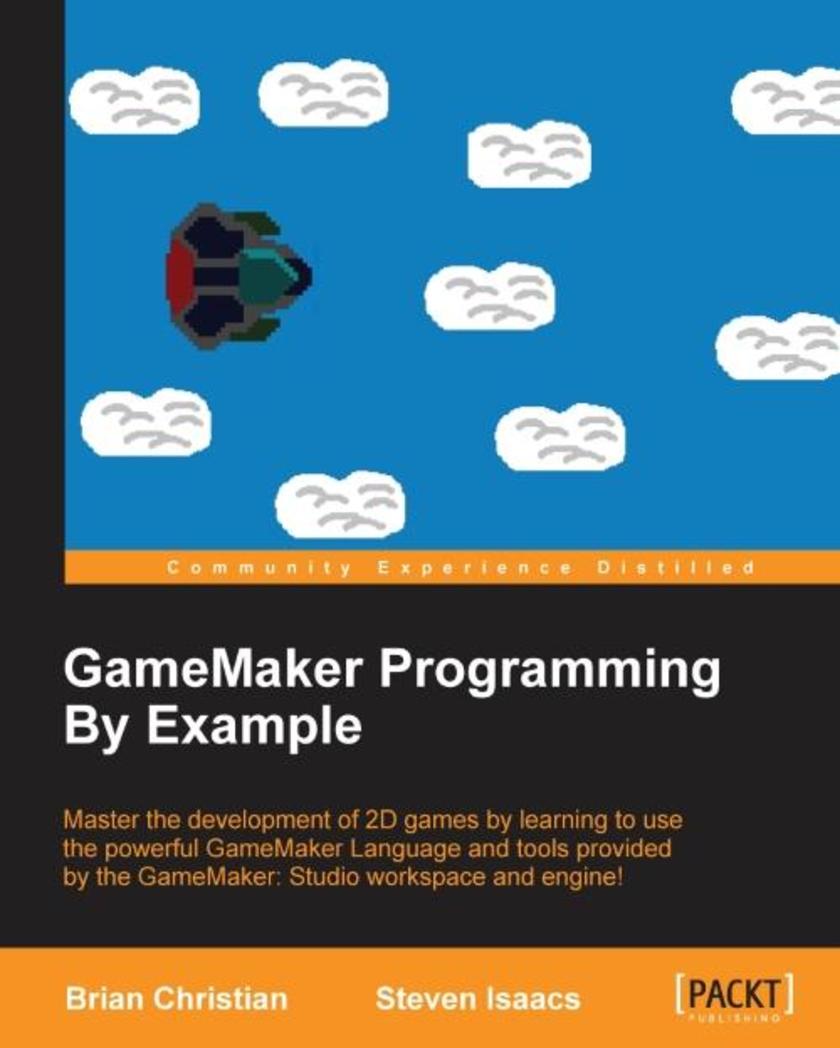
GameMaker Programming By Example
¥80.65
Master the development of 2D games by learning to use the powerful GameMaker Language and tools provided by the GameMaker: Studio workspace and engine! About This Book Rapidly develop games using the powerful yet easy easy-to to-use GameMaker: Studio engine Comprehensive: This is a comprehensive guide to help you learn and implement GameMaker’s features. Go through step-by-step tutorials to design and develop unique games Who This Book Is For If you have at least some basic programming experience of JavaScript or any other C-like languages, then this book will be great for you. No experience beyond that is assumed. If you have no game development experience and are looking for a hobby, are an experienced game developer looking to master some advanced features, or fit anywhere in that spectrum, then you will find GameMaker: Studio and this book to be very useful in helping you create exciting games. What You Will Learn Understand the GameMaker: Studio interface and tools to quickly create the various assets used in your games Translate some of the GameMaker: Studio drag and drop functions to the GameMaker language Create games with random elements for exciting gameplay Use the basic GameMaker file I/O and encryption systems Utilize the GameMaker networking functions to create multiplayer games Give AI routines to your enemies to make challenging gameplay Create particle systems to give your game exciting graphics Understand the various debugging techniques available in GameMaker: Studio In Detail This book is excellent resource for developers with any level of experience of GameMaker. At the start, we’ll provide an overview of the basic use of GameMaker: Studio, and show you how to set up a basic game where you handle input and collisions in a top-down perspective game. We continue on to showcase its more advanced features via six different example projects. The first example game demonstrates platforming with file I/O, followed by animation, views, and multiplayer networking. The next game illustrates AI and particle systems, while the final one will get you started with the built-in Box2D physics engine. By the end of this book, you have mastered lots of powerful techniques that can be utilized in various 2D games. Style and approach A This step-by-step guide that follows and with details ons different topics throughout the creation of various examples.
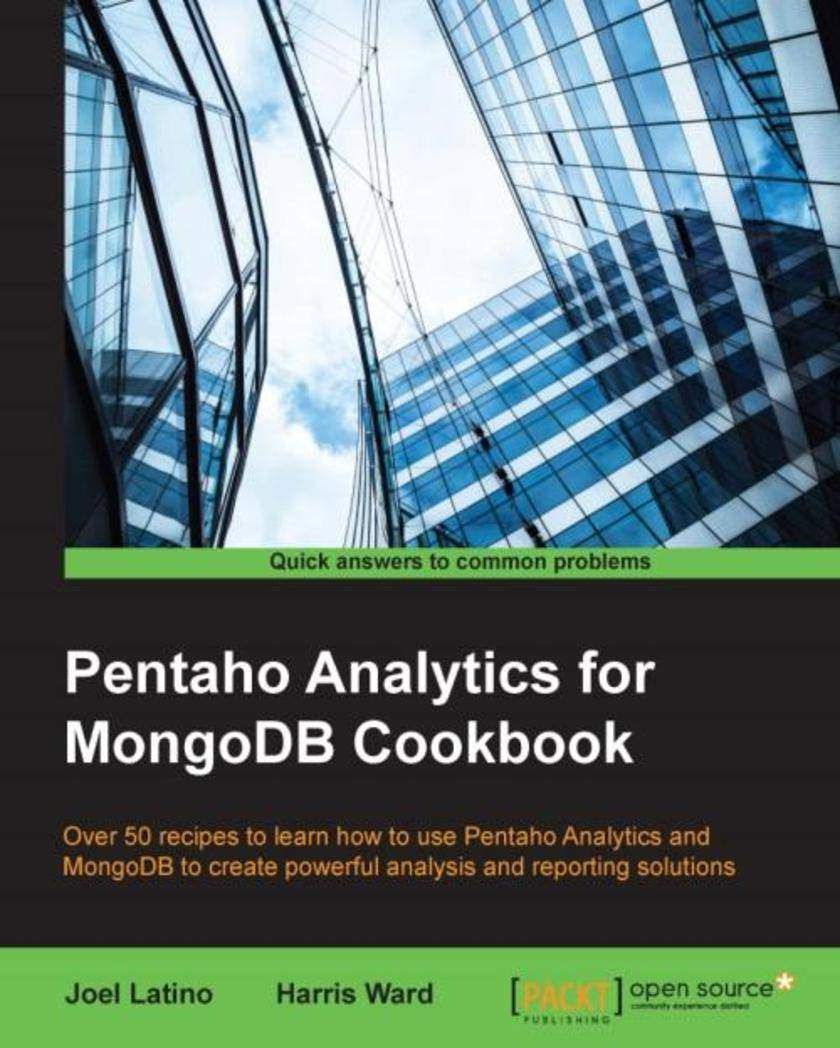
Pentaho Analytics for MongoDB Cookbook
¥80.65
Over 50 recipes to learn how to use Pentaho Analytics and MongoDB to create powerful analysis and reporting solutions About This Book Create reports and stunning dashboards with MongoDB data Accelerate data access and maximize productivity with unique features of Pentaho for MongoDB A step-by-step recipe-based guide for making full use of Pentaho suite tools with MongoDB Who This Book Is For This book is intended for data architects and developers with a basic level of knowledge of MongoDB. Familiarity with Pentaho is not expected. What You Will Learn Extract, load, and transform data from MongoDB collections to other datasources Design Pentaho Reports using different types of connections for MongoDB Create a OLAP mondrian schema for MongoDB Explore your MongoDB data using Pentaho Analyzer Utilize the drag and drop web interface to create dashboards Use Kettle Thin JDBC with MongoDB for analysis Integrate advanced dashboards with MondoDB using different types of connections Publish and run a report on Pentaho BI server using a web interface In Detail MongoDB is an open source, schemaless NoSQL database system. Pentaho as a famous open source Analysis tool provides high performance, high availability, and easy scalability for large sets of data. The variant features in Pentaho for MongoDB are designed to empower organizations to be more agile and scalable and also enables applications to have better flexibility, faster performance, and lower costs. Whether you are brand new to online learning or a seasoned expert, this book will provide you with the skills you need to create turnkey analytic solutions that deliver insight and drive value for your organization. The book will begin by taking you through Pentaho Data Integration and how it works with MongoDB. You will then be taken through the Kettle Thin JDBC Driver for enabling a Java application to interact with a database. This will be followed by exploration of a MongoDB collection using Pentaho Instant view and creating reports with MongoDB as a datasource using Pentaho Report Designer. The book will then teach you how to explore and visualize your data in Pentaho BI Server using Pentaho Analyzer. You will then learn how to create advanced dashboards with your data. The book concludes by highlighting contributions of the Pentaho Community. Style and approach A comprehensive, recipe-based guide to take complete advantage of the Pentaho Analytics for MongoDB.
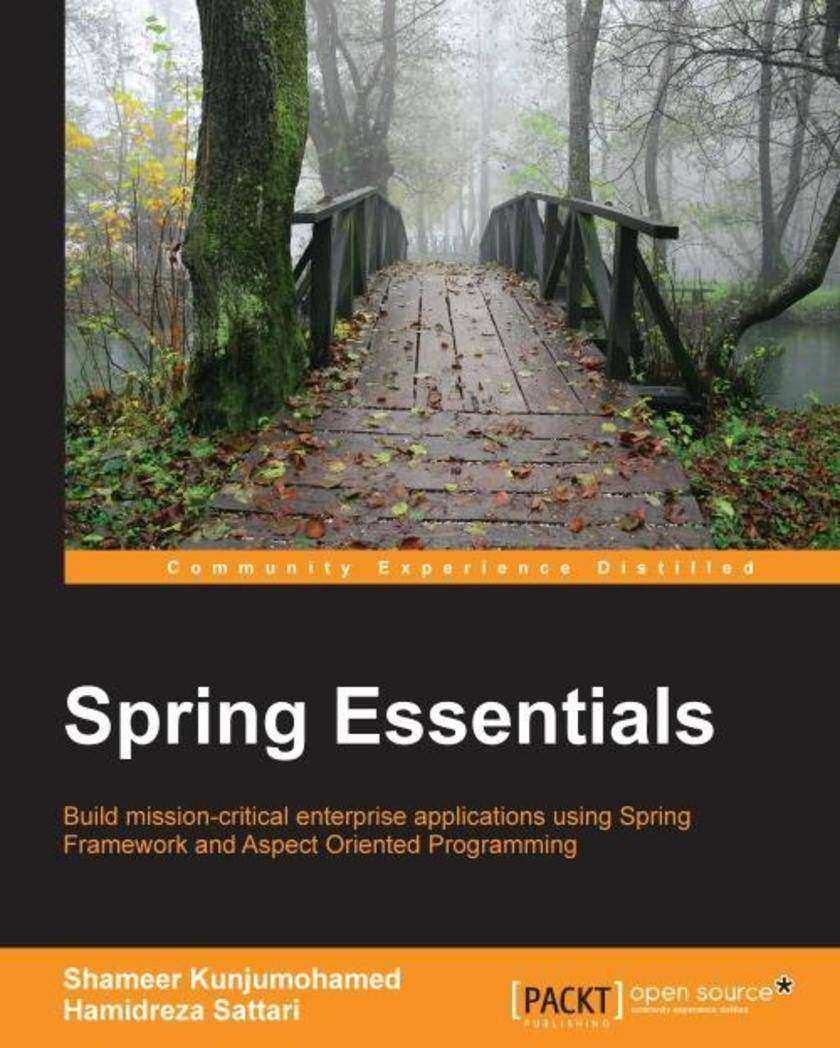
Spring Essentials
¥80.65
Build mission-critical enterprise applications using Spring Framework and Aspect Oriented ProgrammingAbout This BookStep into more advanced features of aspect-oriented programming and API components to build enterprise grade systemsBuild lightning-fast web applications and REST APIs using Spring MVC and its asynchronous processing capabilities with the view technologies of your choiceExplore simplified but powerful data access techniques including JPA (Java Persistence Architecture) repositories and NoSQL data accessWho This Book Is ForIf you are a Java developer who is looking to master Enterprise Java Development using Spring Framework, then this book is ideal for you. Prior understanding of core Java programming and a high-level understanding of Spring Framework is recommended. Having sound knowledge of servlet-based web development in Java and basic Database concepts would be an advantage but not a requirement.What You Will LearnSet up and build standalone and web-based projects using Spring Framework with Maven or GradleGet familiar with JSP Form processing using Spring and Form Tag LibraryDevelop RESTful API applications for XML and JSON data transfers with non-blocking asynchronous capabilitiesExplore Spring’s comprehensive transaction support for declarative Transaction Management and its integration with Spring’s data access abstractionsInvestigate Spring Data access mechanisms with Spring Data Repositories, a simple and consistent data-access abstractionConstruct real-time applications using WebSocket with a SockJS fallback optionUnderstand how to secure your Spring Web and standalone applications using Spring Security declaratively and consistentlyGet to grips with the end-to-end development of an API-based modern SPA using EmberJS at the front end and SpringMVC at the back endIn DetailSpring is an open source Java application development framework to build and deploy systems and applications that run on the JVM. It is the industry standard and the most popular framework among Java developers with over two-thirds of developers using it.Spring Essentials makes learning Spring so much quicker and easier with the help of illustrations and practical examples. Starting from the core concepts of features such as inversion of Control Container and BeanFactory, we move on to a detailed look at aspect-oriented programming. We cover the breadth and depth of Spring MVC, the WebSocket technology, Spring Data, and Spring Security with various authentication and authorization mechanisms.Packed with real-world examples, you’ll get an insight into utilizing the power of Spring Expression Language in your applications for higher maintainability. You’ll also develop full-duplex real-time communication channels using WebSocket and integrate Spring with web technologies such as JSF, Struts 2, and Tapestry. At the tail end, you will build a modern SPA using EmberJS at the front end and a Spring MVC-based API at the back end.By the end of the book, you will be able to develop your own dull-fledged applications with Spring.Style and approachThis book is a practical guide based on logical modules of the whole Spring Framework family, with a start-small approach, increasing in complexity as it progresses. Every chapter is an amalgamation of theory and practical examples, with further discussion on additional features and approaches.
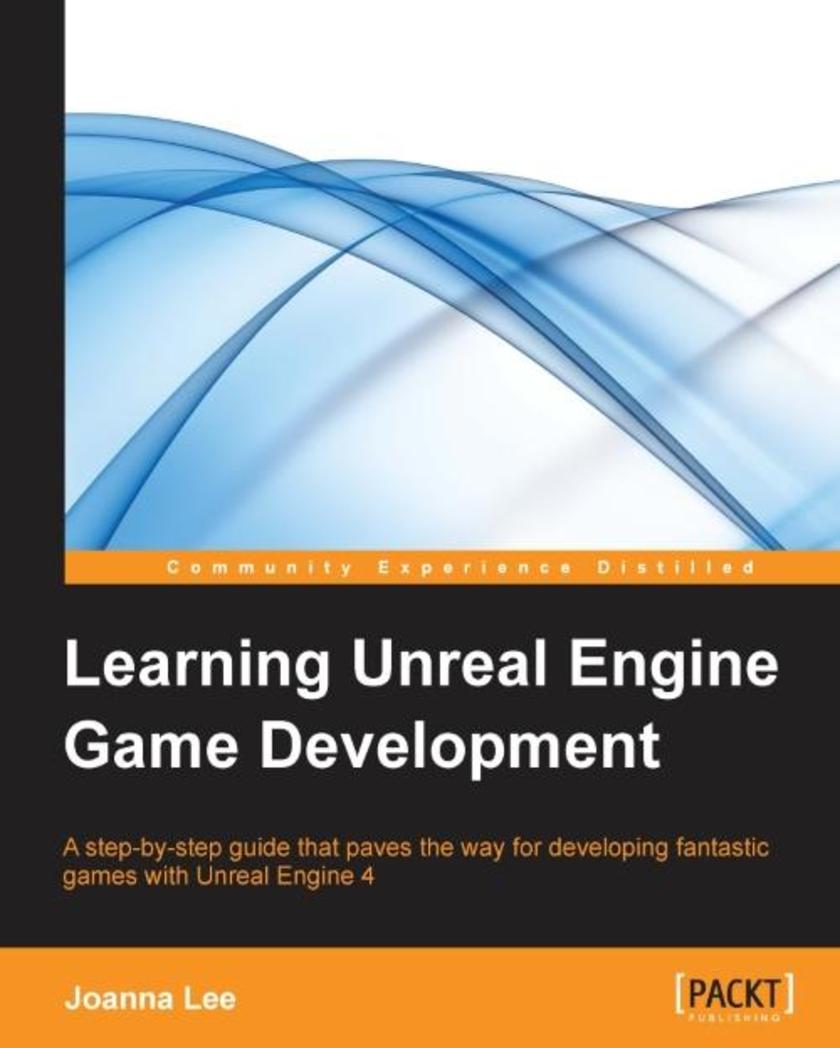
Learning Unreal Engine Game Development
¥80.65
A step-by-step guide that paves the way for developing fantastic games with Unreal Engine 4About This BookLearn about game development and the building blocks that go into creating a gameA simple tutorial for beginners to get acquainted with the Unreal Engine architectureLearn about the features and functionalities of Unreal Engine 4 and how to use them to create your own gamesWho This Book Is ForIf you are new to game development and want to learn how games are created using Unreal Engine 4, this book is the right choice for you. You do not need prior game development experience, but it is expected that you have played games before. Knowledge of C++ would prove to be useful.What You Will LearnLearn what a game engine is, the history of Unreal Engine, and how game studios create gamesExplore the Unreal Engine 4 editor controls and learn how to use the editor to create a room in a game levelUnderstand the basic structures of objects in a game, such as the differences between BSP and static meshesMake objects interactive using level blueprintsLearn more about computer graphics rendering; how materials and light are rendered in your gameGet acquainted with the Material Editor to create materials and use different types of lights in the game levelsUtilize the various editors, tools, and features such as UI, the particle system, audio, terrain manipulation, and cinematics in Unreal Engine 4 to create game levelsIn DetailUnreal Engine 4 is a powerful game development engine that provides rich functionalities to create 2D and 3D games across multiple platforms. Many people know what a game is and they play games every day, but how many of them know how to create a gameUnreal Engine technology powers hundreds of games, and thousands of individuals have built careers and companies around skills developed using this engine.Learning Unreal Engine 4 Game Development starts with small, simple game ideas and playable projects that you can actually finish. The book first teaches you the basics of using Unreal Engine to create a simple game level. Then, you'll learn how to add details such as actors, animation, effects, and so on to the game. The complexity will increase over the chapters and the examples chosen will help you learn a wide variety of game development techniques. This book aims to equip you with the confidence and skills to design and build your own games using Unreal Engine 4. By the end of this book, you'll have learnt about the entire Unreal suite and know how to successfully create fun, simple games.Style and approach This book explains in detail what goes into the development of a game, provides hands-on examples that you can follow to create the different components of a game, and provides sufficient background/theory to equip you with a solid foundation for creating your own games.
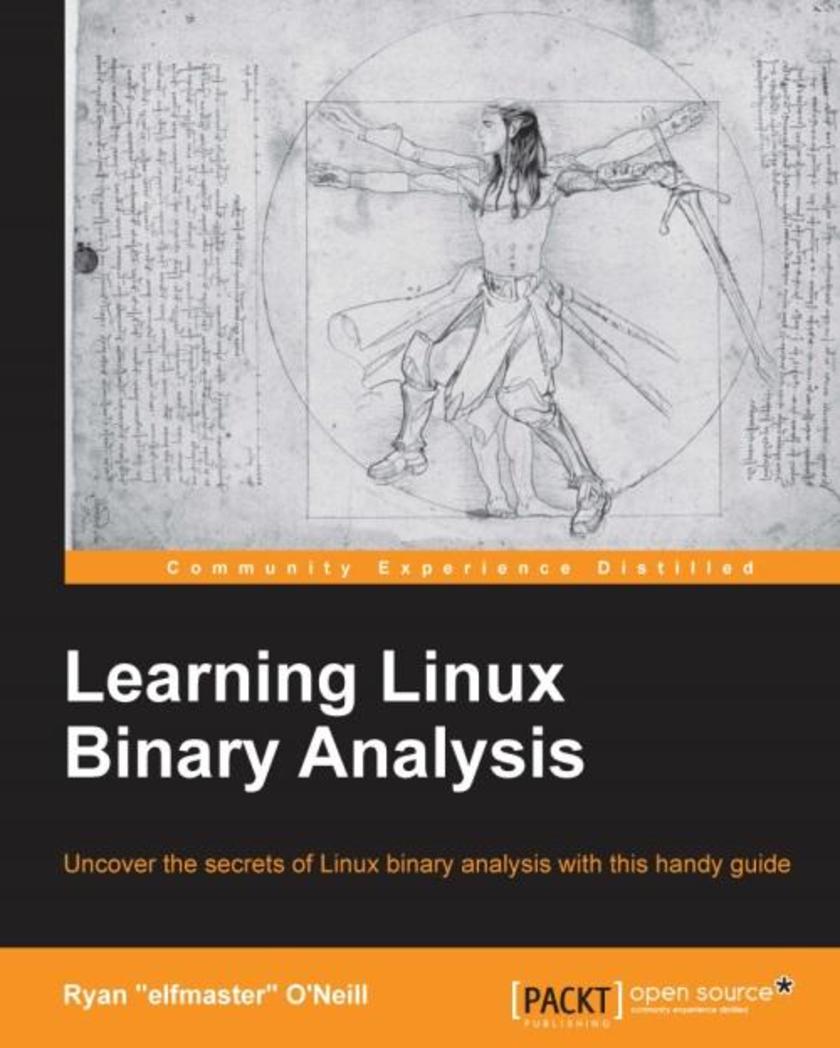
Learning Linux Binary Analysis
¥80.65
Uncover the secrets of Linux binary analysis with this handy guideAbout This BookGrasp the intricacies of the ELF binary format of UNIX and LinuxDesign tools for reverse engineering and binary forensic analysisInsights into UNIX and Linux memory infections, ELF viruses, and binary protection schemesWho This Book Is ForIf you are a software engineer or reverse engineer and want to learn more about Linux binary analysis, this book will provide you with all you need to implement solutions for binary analysis in areas of security, forensics, and antivirus. This book is great for both security enthusiasts and system level engineers. Some experience with the C programming language and the Linux command line is assumed.What You Will LearnExplore the internal workings of the ELF binary formatDiscover techniques for UNIX Virus infection and analysisWork with binary hardening and software anti-tamper methodsPatch executables and process memoryBypass anti-debugging measures used in malwarePerform advanced forensic analysis of binariesDesign ELF-related tools in the C languageLearn to operate on memory with ptraceIn DetailLearning Linux Binary Analysis is packed with knowledge and code that will teach you the inner workings of the ELF format, and the methods used by hackers and security analysts for virus analysis, binary patching, software protection and more.This book will start by taking you through UNIX/Linux object utilities, and will move on to teaching you all about the ELF specimen. You will learn about process tracing, and will explore the different types of Linux and UNIX viruses, and how you can make use of ELF Virus Technology to deal with them.The latter half of the book discusses the usage of Kprobe instrumentation for kernel hacking, code patching, and debugging. You will discover how to detect and disinfect kernel-mode rootkits, and move on to analyze static code. Finally, you will be walked through complex userspace memory infection analysis.This book will lead you into territory that is uncharted even by some experts; right into the world of the computer hacker.Style and approachThe material in this book provides detailed insight into the arcane arts of hacking, coding, reverse engineering Linux executables, and dissecting process memory. In the computer security industry these skills are priceless, and scarce. The tutorials are filled with knowledge gained through first hand experience, and are complemented with frequent examples including source code.
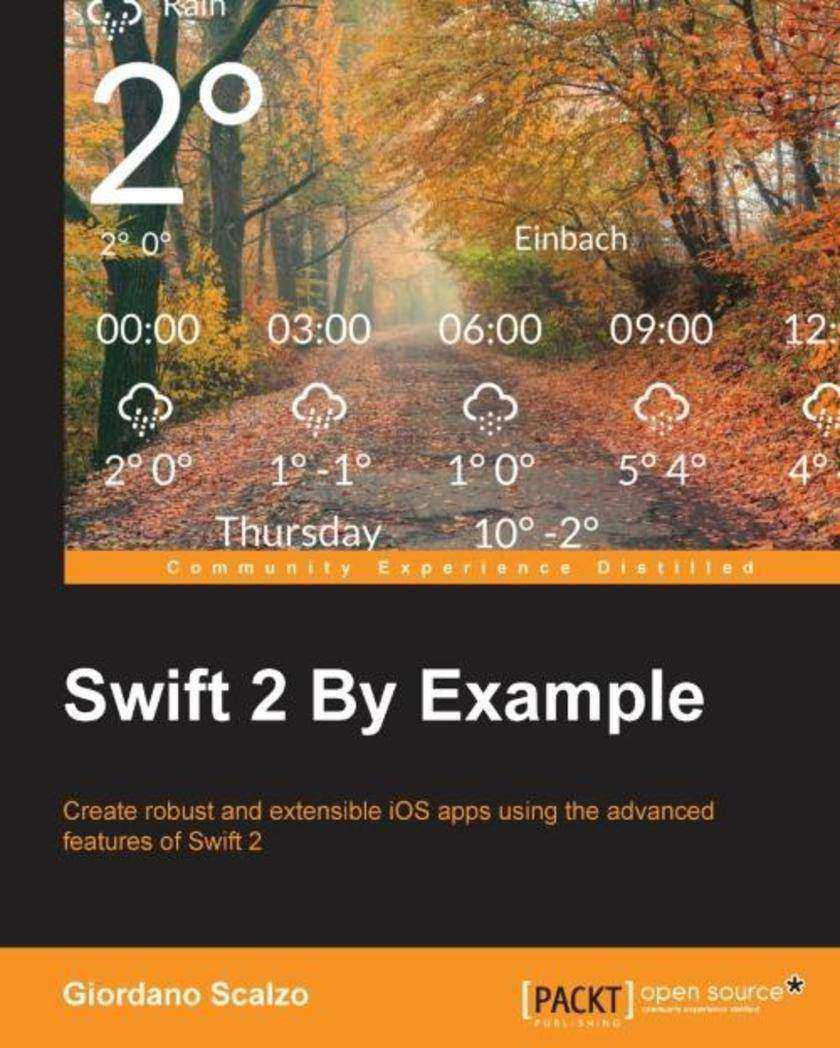
Swift 2 By Example
¥80.65
Create robust and extensible iOS apps using the advanced features of Swift 2 About This Book Get up to speed with the new features of Swift 2 by following the exhaustive examples in this book Specialize in developing real iOS apps, and 2D and 3D videogames using Swift and Cocoapods Learn how to build server API apps to feed your iOS client apps Who This Book Is For This book is ideal for those who want to learn to develop app in Swift, starting the right way. Whether you are an expert Objective-C programmer or are new to this platform, you’ll quickly grasp the code of real world apps, and discover how to use Swift effectively. Prior experience in development for Apple devices would be helpful, but is not mandatory. What You Will Learn Create a server in Swift to deliver JSON data to an iOS app Take advantage of Cocoapods to use third-party libraries Use a clean and effective architecture to decrease complexity and speed up development Take advantage of the most useful parts of the iOS SDK Build games with SpriteKit and SceneKit Develop an app running on the cloud to act as an API server for your client’s apps In Detail Swift is no longer the unripe language it was when launched by Apple at WWDC14, now it’s a powerful and ready-for-production programming language that has empowered most new released apps. Swift is a user-friendly language with a smooth learning curve; it is safe, robust, and really flexible. Swift 2 is more powerful than ever; it introduces new ways to solve old problems, more robust error handling, and a new programming paradigm that favours composition over inheritance. Swift 2 by Example is a fast-paced, practical guide to help you learn how to develop iOS apps using Swift. Through the development of seven different iOS apps and one server app, you’ll find out how to use either the right feature of the language or the right tool to solve a given problem. We begin by introducing you to the latest features of Swift 2, further kick-starting your app development journey by building a guessing game app, followed by a memory game. It doesn’t end there, with a few more apps in store for you: a to-do list, a beautiful weather app, two games: Flappy Swift and Cube Runner, and finally an ecommerce app to top everything off. By the end of the book, you’ll be able to build well-designed apps, effectively use AutoLayout, develop videogames, and build server apps. Style and approach These easy-to-follow tutorials show you how to build real-world apps. The difficulty and complexity level increases chapter by chapter. Each chapter is dedicated to build a new app, beginning from a basic and unstyled app through to a full 3D game. The last two chapters show you how to build a complete client-server ecommerce app right from scratch.
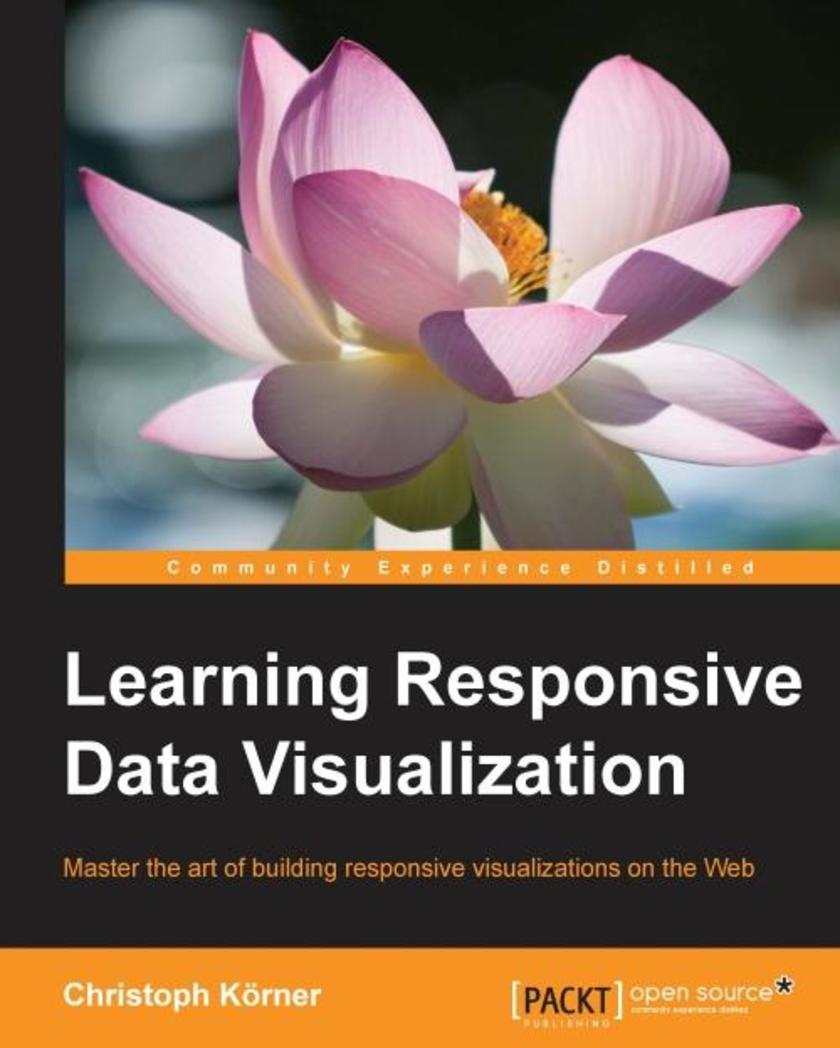
Learning Responsive Data Visualization
¥80.65
Master the art of building responsive visualizations on the Web About This Book Learn the techniques for building data visualizations that work well for all screen sizes Implement responsive techniques with popular libraries to get to grips with building responsive visualizations that work in the real world Incorporate responsive workflow in your data visualization process to build visualizations that take a mobile-first approach. Who This Book Is For Web developers and data science professionals who want to make their visualizations work for smaller screen sizes. Some basic knowledge of JavaScript and Data visualization is expected. What You Will Learn Get familiar with responsive design for data visualizations Understand the main concepts of D3.js to create interactive visualizations Unleash the power of Bootstrap to create stunning and responsive visualizations for all screen resolutions Implement Touch and Mouse interactions for mobile-first applications Design Transitions and Animations that impress in portrait and landscape Build a Responsive World Map using GeoJSON and D3.js In Detail Using D3.js and Responsive Design principles, you will not just be able to implement visualizations that look and feel awesome across all devices and screen resolutions, but you will also boost your productivity and reduce development time by making use of Bootstrap—the most popular framework for developing responsive web applications. This book teaches the basics of scalable vector graphics (SVG), D3.js, and Bootstrap while focusing on Responsive Design as well as mobile-first visualizations; the reader will start by discovering Bootstrap and how it can be used for creating responsive applications, and then implement a basic bar chart in D3.js. You will learn about loading, parsing, and filtering data in JavaScript and then dive into creating a responsive visualization by using Media Queries, responsive interactions for Mobile and Desktop devices, and transitions to bring the visualization to life. In the following chapters, we build a fully responsive interactive map to display geographic data using GeoJSON and set up integration testing with Protractor to test the application across real devices using a mobile API gateway such as AWS Device Farm. You will finish the journey by discovering the caveats of mobile-first applications and learn how to master cross-browser complications. Style and approach As the world shifts to mobile devices for consuming data on the Web, developers are faced with the unique challenge of making data visualizations work for their smaller screens. The growth of responsive web design enabled developers to adopt page layouts and media for smaller screens, but there is still little information available on how to adapt data visualizations for the smaller screens. This book fills this important gap and shows how responsive web design principles can be extended to create visualizations that work well regardless of the screen size, thereby allowing developers to build user-friendly visualizations that work well on all devices. In addition to covering some of the popular techniques and design patterns for building responsive visualizations, the book also shows readers how to implement these techniques with the help of some popular tools and libraries.
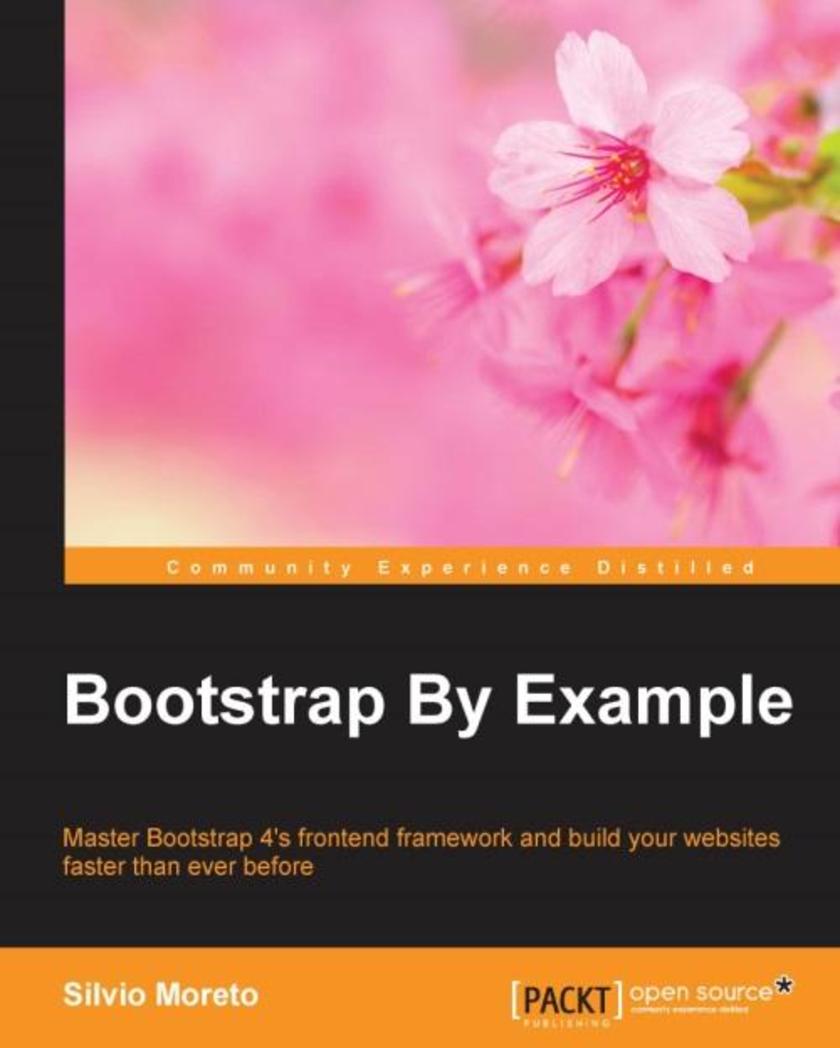
Bootstrap By Example
¥80.65
Master Bootstrap 4's frontend framework and build your websites faster than ever before About This Book Become an expert in Bootstrap framework, and speed up front-end development and prototyping through real-life examples An applied guide exploring two web applications such as Twitter and Dashboard from scratch Hands on the Bootstrap version 4 even before the official release Who This Book Is For If you are a frontend developer with no knowledge of Bootstrap, then this book is for you. Basic knowledge of HTML, CSS, and JavaScript is expected, as well as a reasonable understanding of web frameworks, such as jQuery. What You Will Learn Discover how to use Bootstrap’s components and elements, and to customize them for your own projects Understand the framework’s usage in the best way with the recommended development patterns Create web pages for any kind of device like tablet, mobile, computer, etc. Construct a Twitter app by exploring the advanced bootstrap components like Breadcrumbs, Pagination, Media objects, and so on Combine the power of JavaScript with your Bootstrap app for more functionality Create a Dashboard web app using Bootstrap’s JavaScript plugins Learn the difference between Bootstrap’s version 3 and 4 of the framework Extend your knowledge on Bootstrap’s external plugins, their incorporation and usage In Detail Bootstrap is a free, open source collection of tools that helps developers create websites or web applications. It provides a faster, easier, and less repetitive solution to designing and building applications. Before Bootstrap’s release, it was necessary to import a variety of libraries into your project that offered different components and features for web interface development. Plus with the increased popularity of smartphones there were lack of libraries that could handle the responsiveness of a web page. Bootstrap‘s existence let it quickly become famous as a front-end framework that offered a wide set of tools from page grid up to components that render a web page in the best possible way for any device. This book will be a tutorial covering various examples as well as step-by-step methodology to create interesting web applications using Bootstrap and to understand the front-end framework to its core. We begin with an introduction to the Bootstrap framework and setting up an environment to build a simple web page. We then cover the grid system, basic Bootstrap components, HTML elements, and customization components for responsive and mobile first development. This is presented by creating a beautiful Landing page sample. You will also learn how to create a web application like Twitter by using the full set of components offered in the framework. Finally, you will learn to create a dashboard web app, using Bootstrap to its finest potential including component customizations, event handling, and external library integration. All these examples are explained step-by-step and in depth, while covering the versions 3 and the most recent version 4 of Bootstrap. So, you will be in the state of the art for front-end development. By the end of this book, you will be familiar with the development of a plugin for the framework and Bootstrap’s world which is popular for fast paced front-end web development, used in countless projects all over the world, and now yours. Style and approach This is a step-by-step guide that closely focuses on developing web applications in most objective way solving real-life problems with Bootstrap. It covers two sample web applications, which are explained in detail.
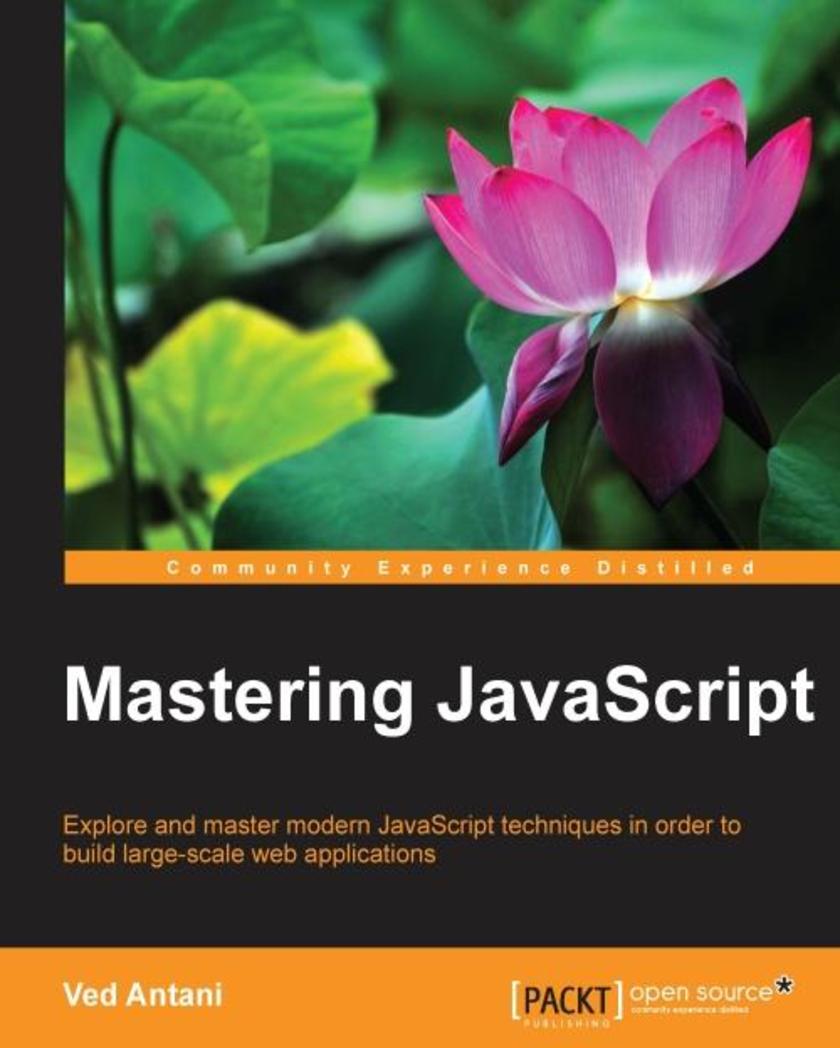
Mastering JavaScript
¥80.65
Explore and master modern JavaScript techniques in order to build large-scale web applicationsAbout This BookWrite powerful code with the high-level functions that JavaScript offersTest and debug issues with JavaScript code using various modern mechanismsOffers an expert's eye on the latest ES6 features and how these advanced tasks fit together in JavaScript as a wholeWho This Book Is ForThis book is ideal for web developers who are looking to master modern JavaScript concepts and design principles. You should already have an intermediate level of JavaScript knowledge before starting this book.What You Will LearnGet a run through of the basic JavaScript language constructsGet familiar with the Functions and Closures of JavaScriptExplore Regular Expressions in JavaScriptCode using the powerful object-oriented feature in JavaScriptTest and debug your code using JavaScript strategiesMaster DOM manipulation, cross-browser strategies, and ES6Understand the basic concurrency constructs in Java* and best performance strategiesLearn to build scalable server application in JavaScript using Node.jsIn DetailJavaScript is a high-level, dynamic, untyped, lightweight, and interpreted programming language. Along with HTML and CSS, it is one of the three essential technologies of World Wide Web content production, and is an open source and cross-platform technology. The majority of websites employ JavaScript, and it is well supported by all modern web browsers without plugins. However, the JavaScript landscape has changed dramatically in recent years, and you need to adapt to the new world of JavaScript that people now expect. Mastering modern JavaScript techniques and the toolchain are essential to develop web-scale applications.Mastering JavaScript will be your companion as you master JavaScript and build innovative web applications. To begin with, you will get familiarized with the language constructs and how to make code easy to organize. You will gain a concrete understanding of variable scoping, loops, and best practices on using types and data structures, as well as the coding style and recommended code organization patterns in JavaScript. The book will also teach you how to use arrays and objects as data structures. You will graduate from intermediate-level skills to advanced techniques as you come to understand crucial language concepts and design principles. You will learn about modern libraries and tools so you can write better code.By the end of the book, you will understand how reactive JavaScript is going to be the new paradigm.Style and approachThis is a comprehensive guide with a clear focus on practical use cases and patterns. Each chapter consists of best practices, useful advice, and a bunch of easy-to-follow examples that will build up your skills as you advance through the book.
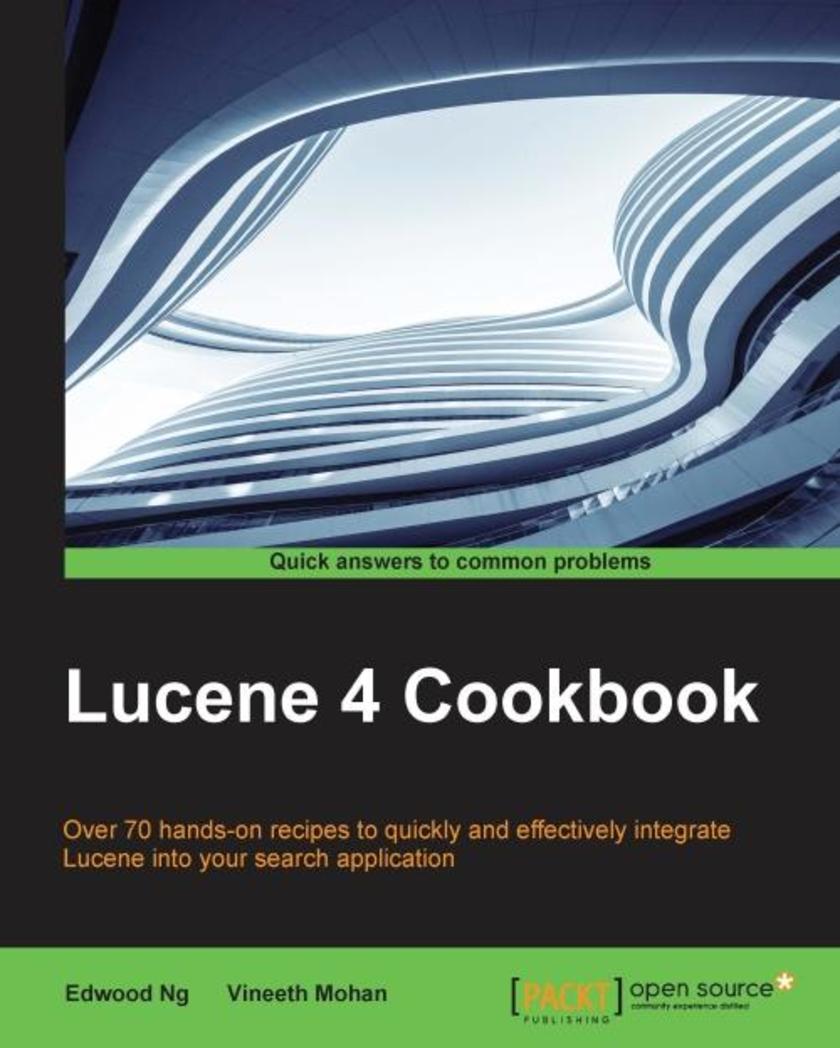
Lucene 4 Cookbook
¥80.65
This book is for software developers who are new to Lucene and who want to explore the more advanced topics to build a search engine. Knowledge of Java is necessary to follow the code samples. You will learn core concepts, best practices, and also advanced features, in order to build an effective search application.
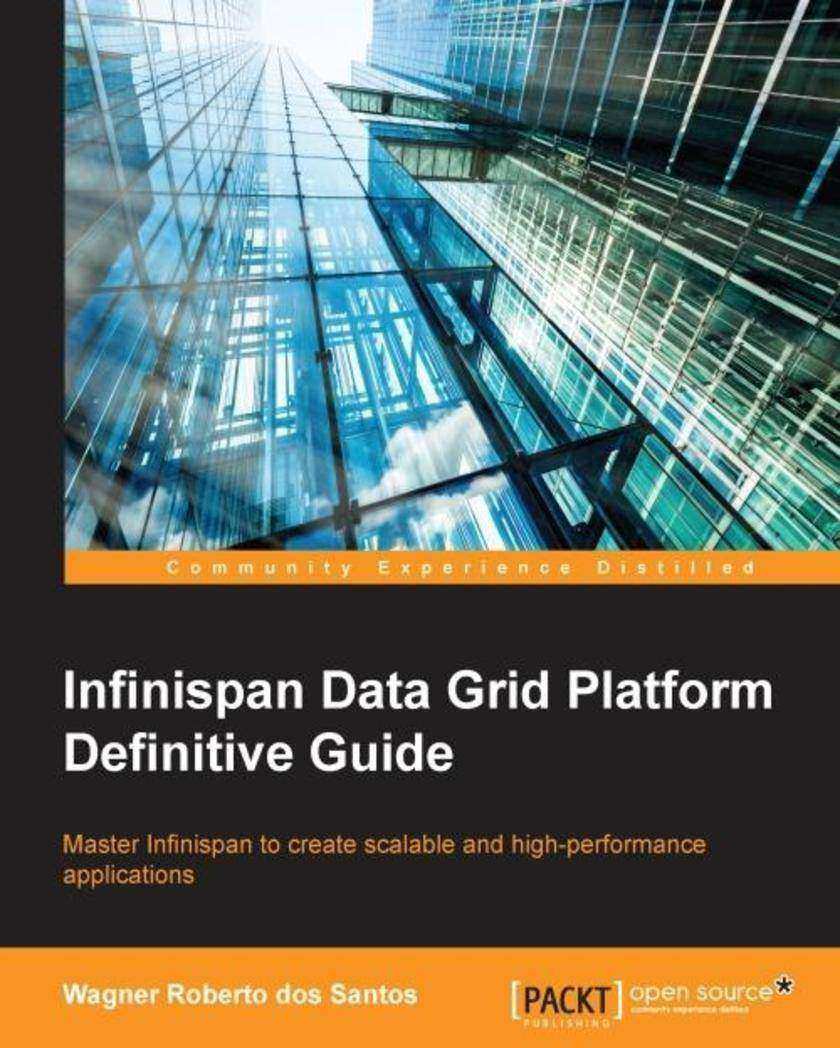
Infinispan Data Grid Platform Definitive Guide
¥80.65
This practical guide is intended for those who want to learn how to build extremely scalable applications. This book is easy to read and is aimed at Java enterprise developers with a solid knowledge of Java. However, no previous coding experience with Infinispan is required.
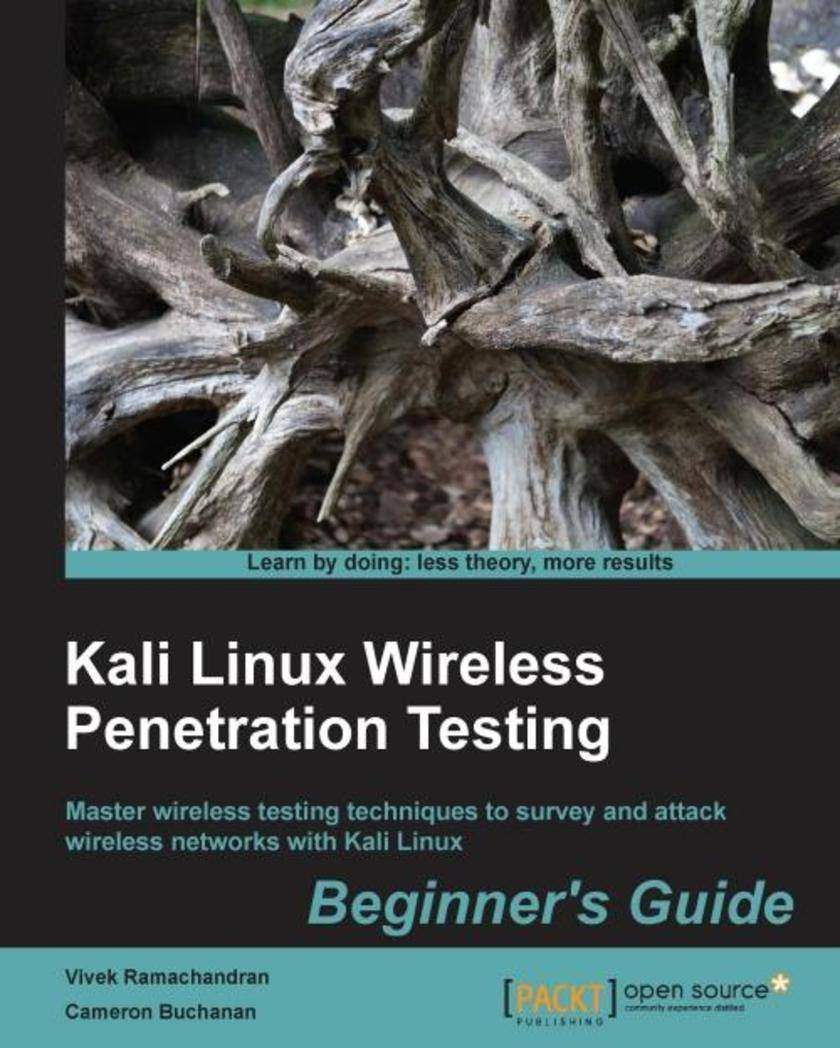
Kali Linux Wireless Penetration Testing: Beginner's Guide
¥80.65
If you are a security professional, pentester, or anyone interested in getting to grips with wireless penetration testing, this is the book for you. Some familiarity with Kali Linux and wireless concepts is beneficial.




 购物车
购物车 个人中心
个人中心



